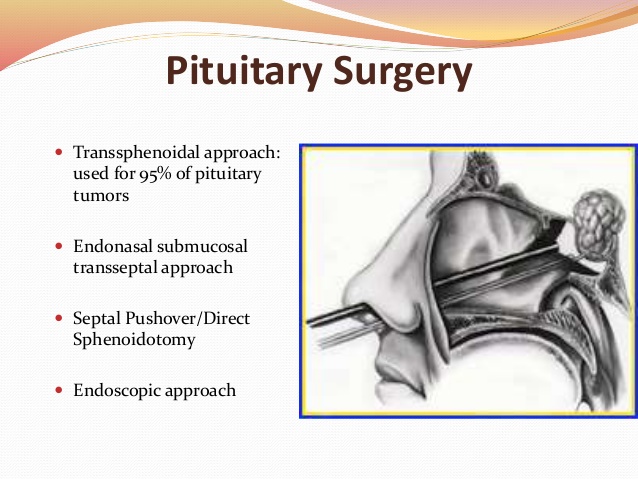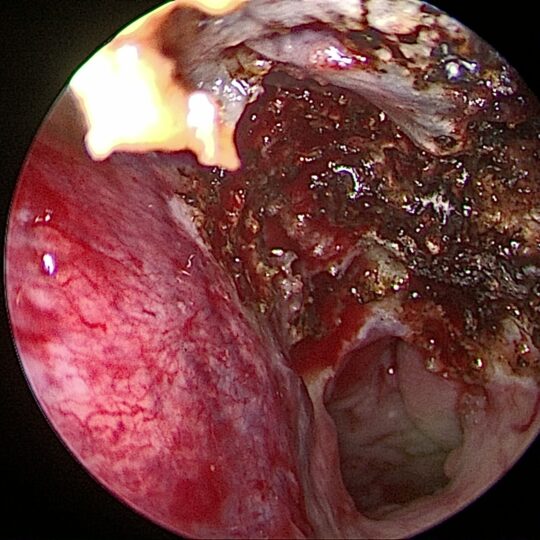Csf Leak & Other Nasal Problems
What is a CSF leak?
Cerebro spinal fluid leak results when the fluid around the brain (called cerebro spinal fluid) leaks through a hole through the skull bone. This fluid can either drain from the ear or the nose, depending on where the skull bone is damaged.

What are the symptoms of CSF leak?
Patients typically complain of clear, watery drainage usually from only one side of the nose. Drainage can increase with tilting the head forward or straining. Other symptoms can include headache, vision changes.
CSF leaks can be separated into two groups. Spontaneous leaks occur without any known cause. Traumatic leaks are most commonly related to a history of head injury, surgery, or tumors.

How are CSF leaks diagnosed?
Your doctor will perform a history and physical exam. Often, the doctor will examine the nose with an endoscope. Your physician may also ask you to lean forward for several minutes to see if this increases drainage. If the drainage can be collected, it is often sent for laboratory testing to confirm that it is cerebral spinal fluid. Imaging studies such as CT scans or MRI cisternography may be ordered to evaluate for skull bone defects.
What is the treatment for a CSF leak?
Treatment can be either medical or surgical.
Conservative treatment is usually recommended first in cases of spontaneous CSF leak. This includes 1-2 weeks of bed rest. Patients are encouraged to avoid coughing, sneezing, and heavy lifting. Straining is avoided by taking stool softeners.
Surgical treatment of CSF leaks is used when conservative treatment fails. The approach can be either through endoscopy guidance. During surgery site of leak is identified. It is then freshened and then packed with patients fat and fascia obtained from lateral aspect of thigh most of times. This layer is further supported by surgical glue. After thorough checking of further leakage wound site is supported by surgical sponge(merocel) which will be removed at a later date.
Postoperative care
- regular hospital visits till suggested by surgeon and regular nasal toileting
- 1-2 weeks of bed rest. Avoid dust exposure.
- Patients are encouraged to avoid coughing, sneezing, and heavy lifting.
- Straining is avoided by taking stool softeners if necessary
Pituitary surgeries
Pituitary tumors can be reached endoscopically from nasal cavity through sphenoid. Pituitary tumors like adenoma, prolactinoma, craniopharyngioma can be removed endoscopically. Advantages with endoscopic removal are complications are less.

Nasal tumour JNA surgeries
We take help of coblation and microdebrider for clearance of nasal tumours. We do maxillectomy surgeries also for nasal cancers.

CONNECT — Product Branding: — Serial Number: NT743788-P — Sales Number: TC200 — Part Number: 062364-06BA — SW (Tarball) Version: 471000-0130.BA Link 1 [H3-LINK] [Primary Source] — Product Branding: S — Serial Number: ZV726107-P — Sales Number: TC300 — Part Number: 062703-07BB — SW (Tarball) Version: 471001-0127.BC — Camera Head [Description: H3-Z SPIES; Serial Number: ZV844089-H] — Brightness: 3 — Special Features: [SPIES: Enabled,SPIES; Fiberscope Filter: Disabled; Enhancement: CLARA + CHROMA; Image Flip: None; Zoom: 1] Power LED 175 — Product Branding: Karl Storz — Serial Number: 6710 — Device ID: 2 — Device Type: 0x100e — Light Source: On — LS Mode: Auto — Max Intensity Auto: 100 — Intensity Manual: 20 — Exposure: 523

Contact us
Bayya Hospitals
12-25-192, Bhagath Singh Centre, Kothapet, Guntur, Andhra Pradesh 522001
0863-2225729
+91 6304429294
+91 93819 22827
Useful Links
Consultation Hours
For ENT
Monday – Saturday 9AM – 1:30 Noon,
Evening 5:30PM to 8:00PM
Sunday – CLOSED
For EYE
Monday – Saturday 9AM – 5:00PM
Sunday – CLOSED
